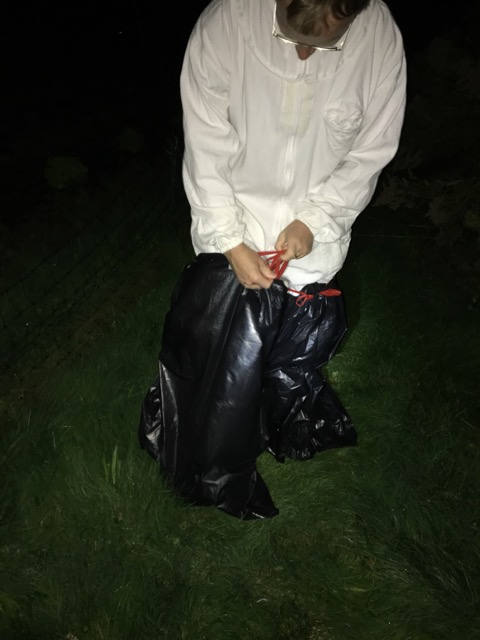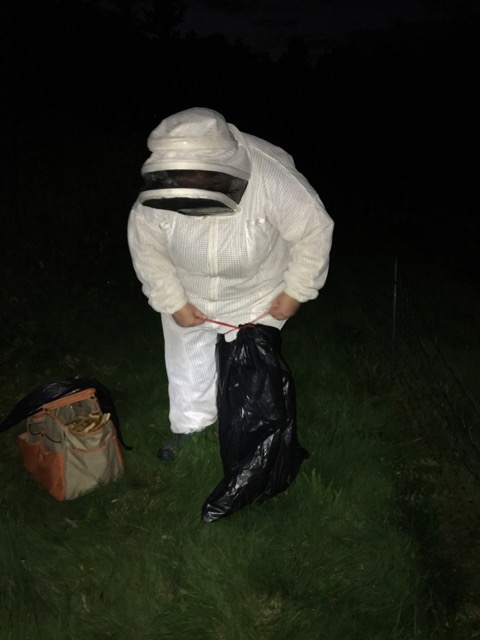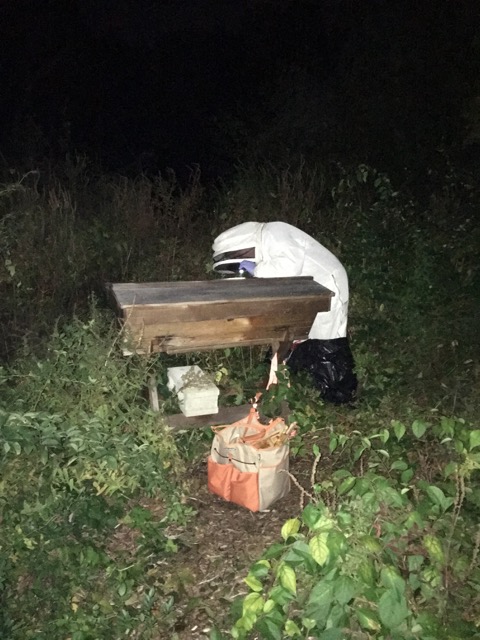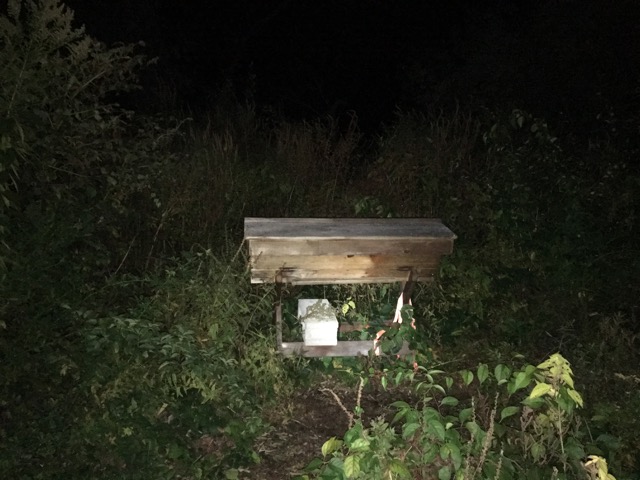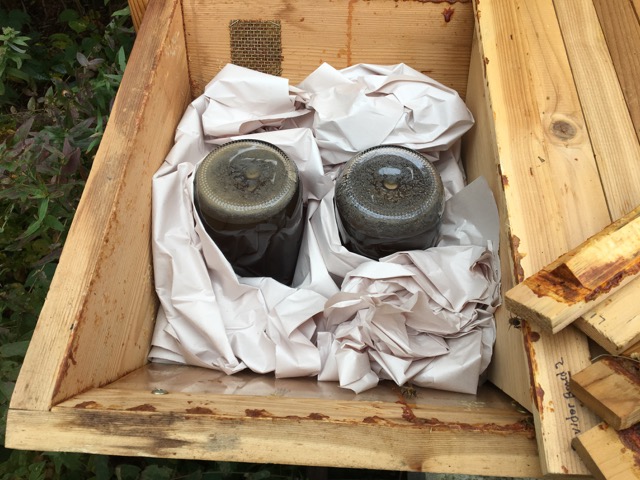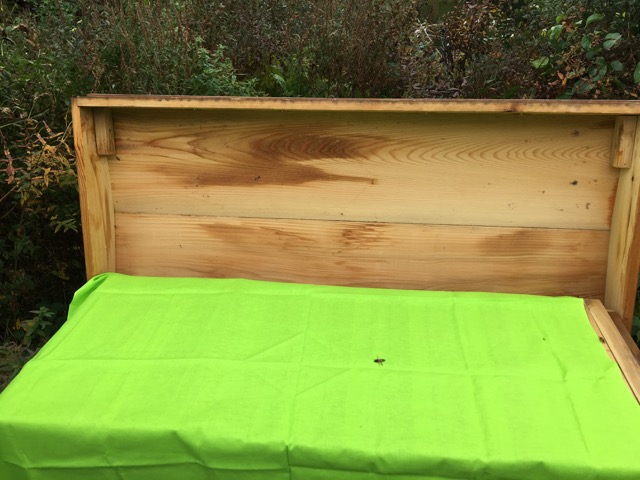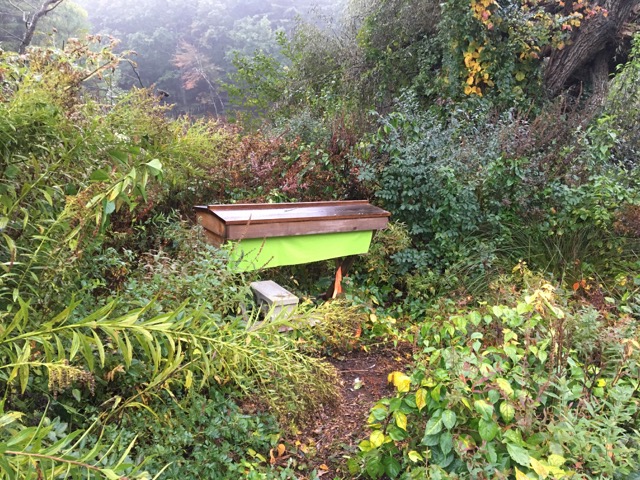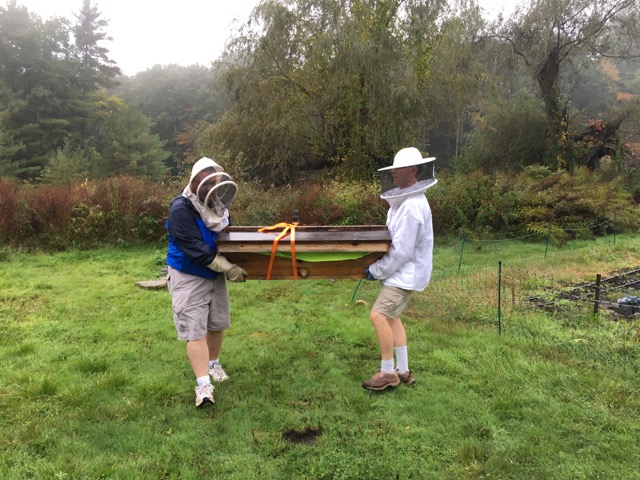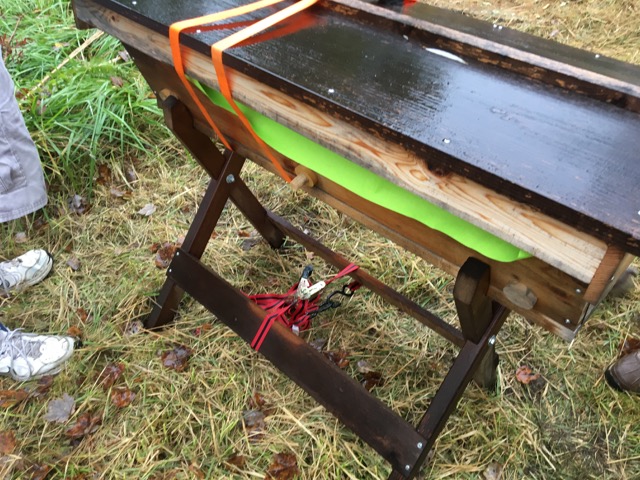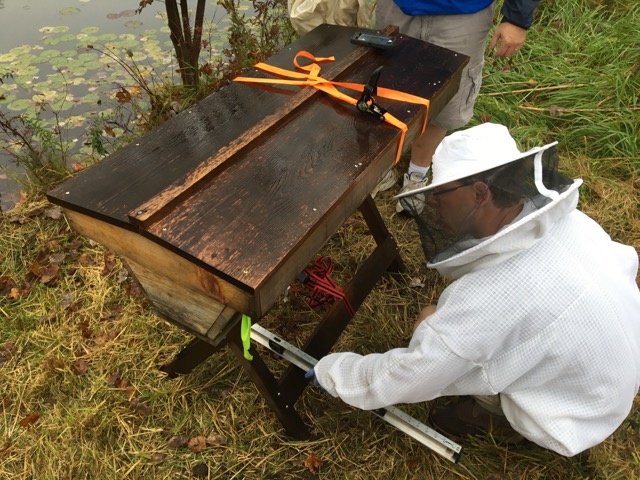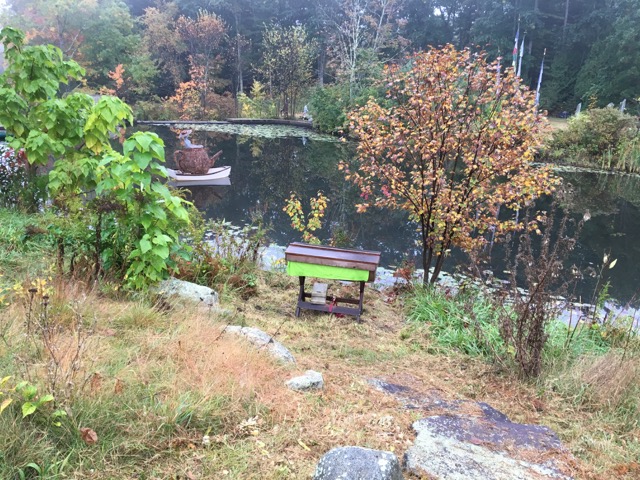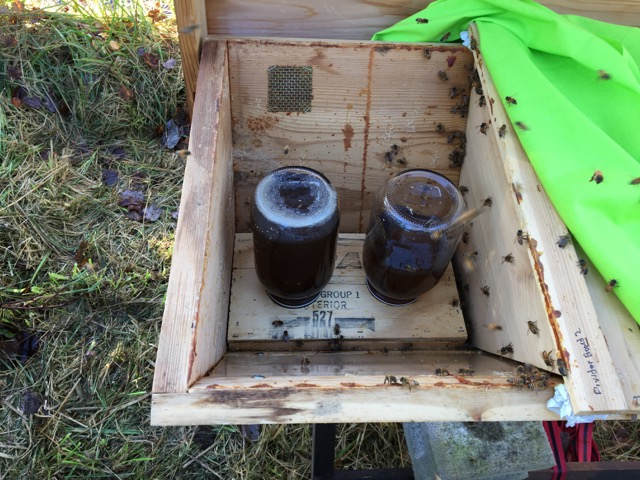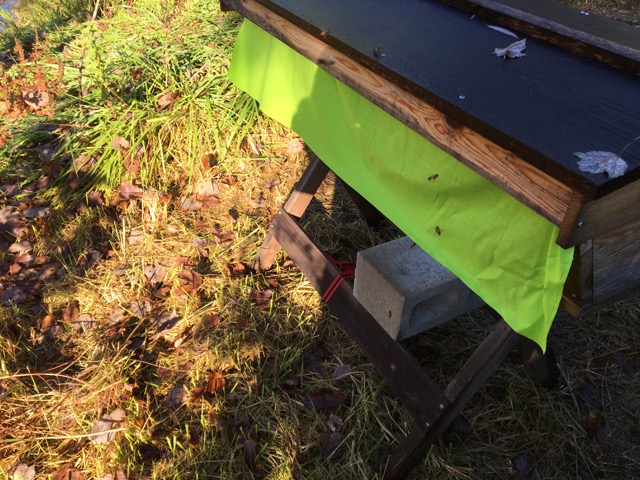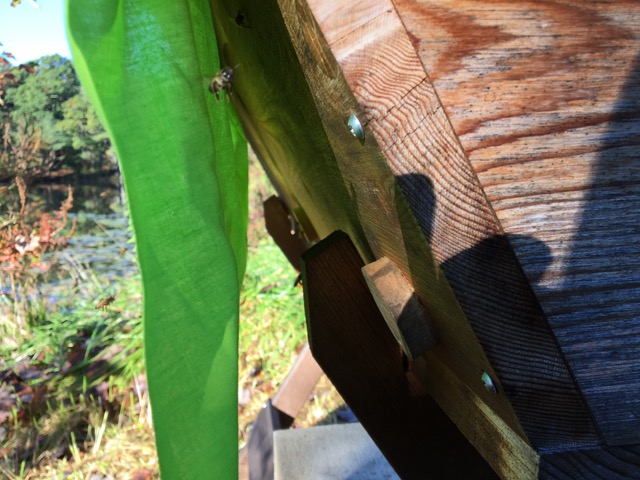Moving Day
For several reasons the Willow Hive needed to be moved. The area was covered in poison ivy which was getting difficult to deal with. The hive wasn’t getting as much sun as it needed. The willow tree that it was under was quite large and created a lot of shade. Another major reason to move the hive is that in the winter, once there is snow on the ground it will be very difficult to get to the hive. There needs to be at least some kind of access to the hive so that I can clear away any snow that may be covering their doorway.
Linda and I walked around a bit to try to find the perfect new home for the Willow Hive. We decided on a spot that isn’t too far away from where the hive is sitting. This spot will provide more sun for the hive and there is no poison ivy! It’s also right off the driveway, so I will be able to easily get to the hive in the winter if I need to. The new spot is about 30 – 40 feet away from the current spot.
When reading up on how to move a hive, I came across a lot of info that stated you either move the hive 3 feet or 3 miles. Some suggestions were that if you were moving your hive more than 3 feet, you should move it in 3 feet increments. This move needed to be done at one time, there was no way that I was going to move this hive several times.
There were a couple of people that suggested that if you move the hive more than 3 feet but less than 3 miles to create a barrier in front of the bee’s doorway. Once the hive is moved, you keep the bees locked inside for 3 days. That way when they come out of the hive, they will reorient themselves. This was the best choice for me. Creating an artificial barrier would allow me to move the hive the approximately 40 feet that I needed to move it without the hassle of moving it several times.
This colony was very low on nectar and honey stores, so I have been feeding them. Before the move was to happen I made sure that the bees had plenty of sugar syrup since they would be locked up for 3 days. I also packed the feeders in with plain packing paper. This would help to prevent the bees from coming out and it would hold the feeders in place during the move. The other factor that I was looking at was the weather. I wanted there to be some rainy days after the move to ensure that the bees reorient themselves and can find their way back to their new location.
The longer they stay in the hive, the better. This makes reorientation much more likely and the move should be successful. Needless to say, my nerves were getting the better of me. The biggest concern that I had was breaking the comb, that would be devastating. This colony was not building new comb at all and if it broke during the move there wouldn’t be any chance of them being able to fix it.
A couple of days before the move, we took the extra set of hive legs and set them up in the new spot. We had to make sure that the legs were sitting level, so that the hive would be level. This took a little work, but it wasn’t too bad. The new spot was much easier to make level than where the hive currently sits. Preparing this site was fairly quick and easy. The legs are now ready for the hive.
At night, 3 days before we were going to move the hive, we went out and closed it up. I plugged the entrance holes and made sure all of the bars were tightly placed together. After the hive was closed up, I placed a cotton sheet over the top of the bars that hung down in front of their doorway. This sheet would be the barrier that the bees would have to adjust to. I opened the bottom a little to make sure that the bees had some air circulation while they were locked in.
The morning of moving day, Don met us at the farm to help move the hive. Everyone covered their legs and feet with plastic bags to protect from the poison ivy and even though the bees were locked in, bee suits were on. The hive was picked up and carefully carried to it’s new location. Once in place, we made sure the hive was level and stable.
Then it was time to open the hive for the bees. They still seemed calm even after all that they had been through. The cotton sheet worked just as I had hoped, The bees had to come out and take orientation flights. I opened the observation window to make sure nothing broke. Everything looked fine. I was so relieved!
Once the weather was good, I opened the hive for a quick peek. Everything looked great. The bees didn’t seemed at all phased by the move. A gust of wind had blown through and the cotton sheet came off. Everything worked well and went smoothly. The bees adjusted to their new space very well and I think they are happy about getting some more sunshine!
